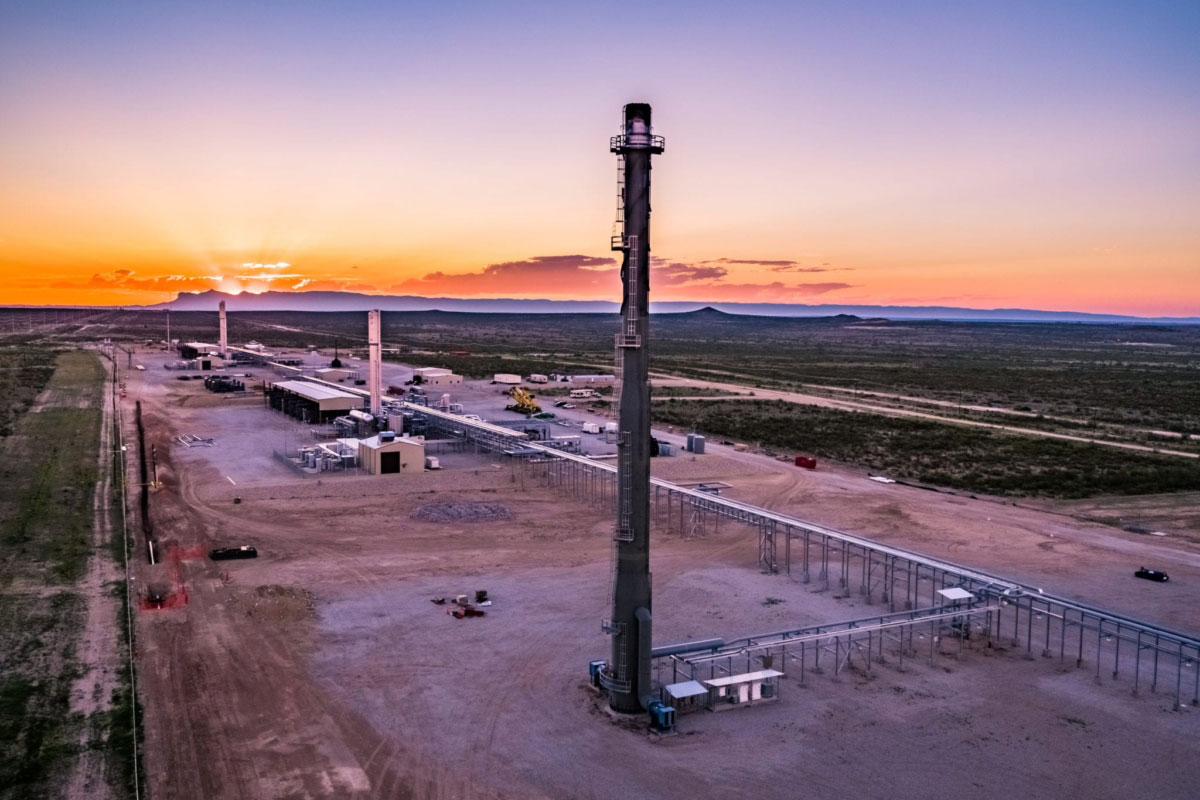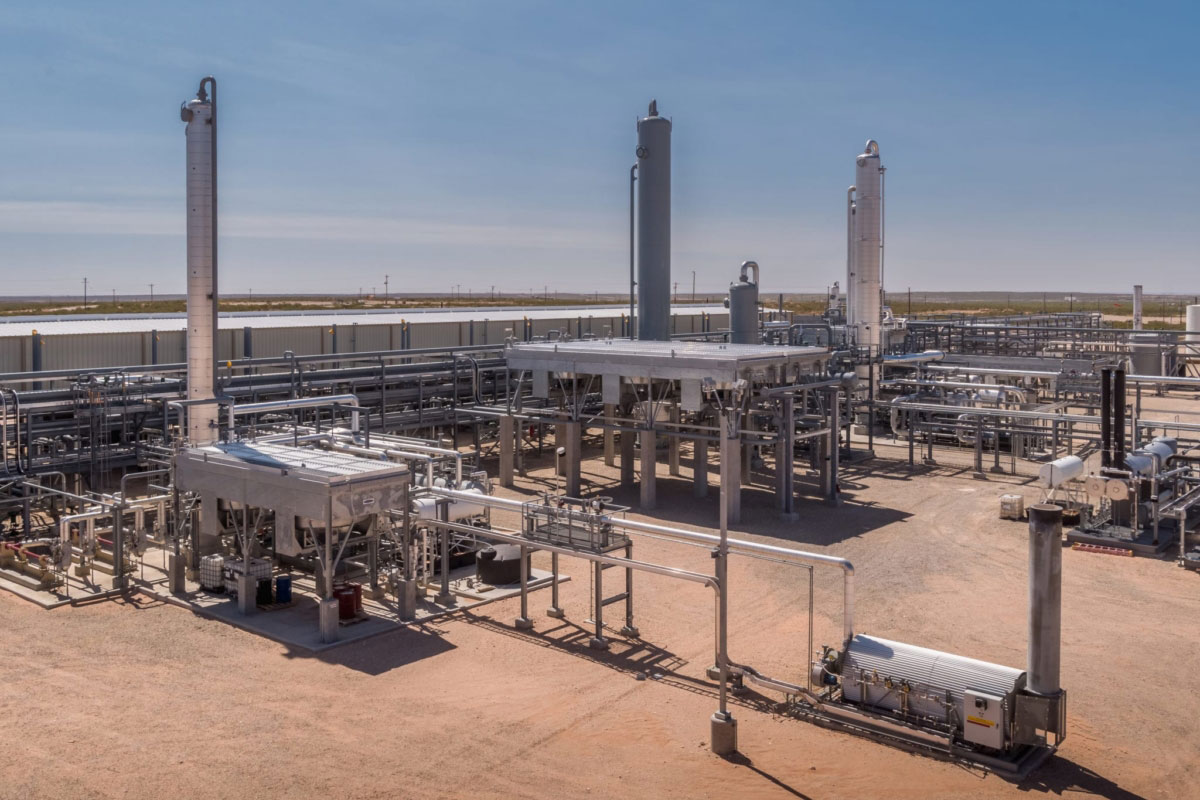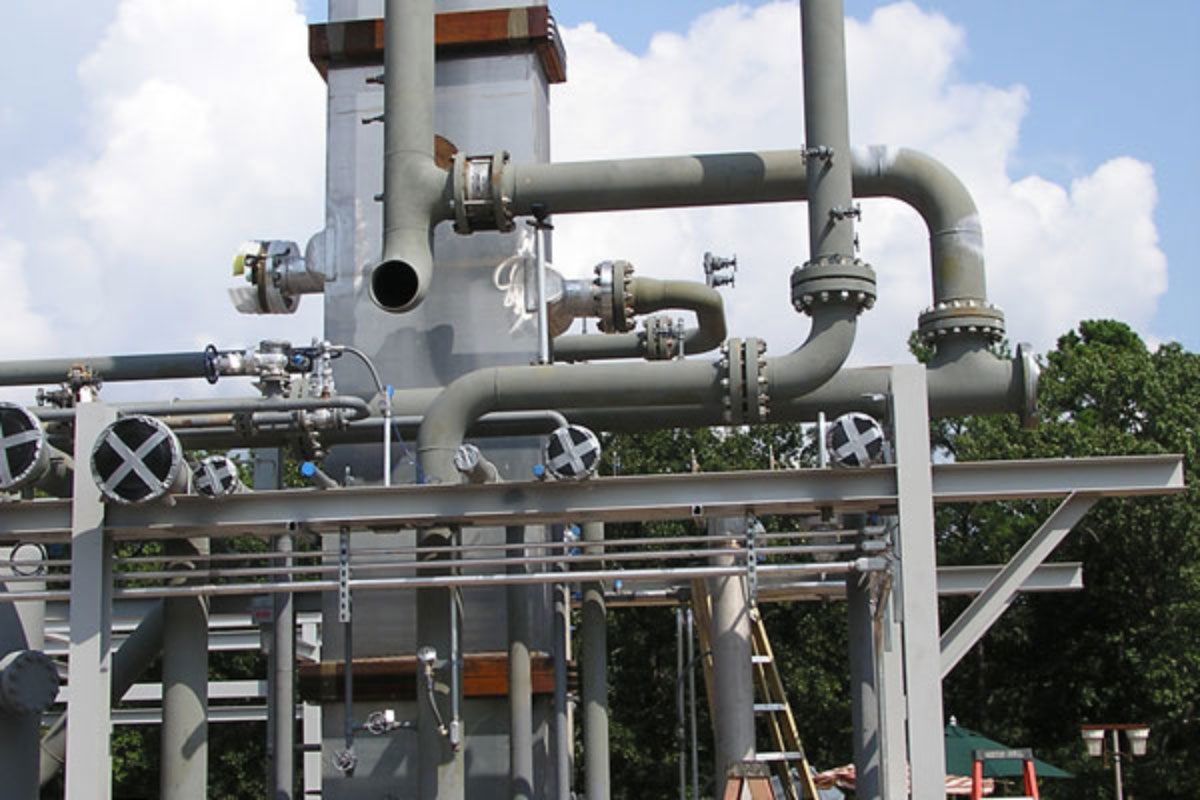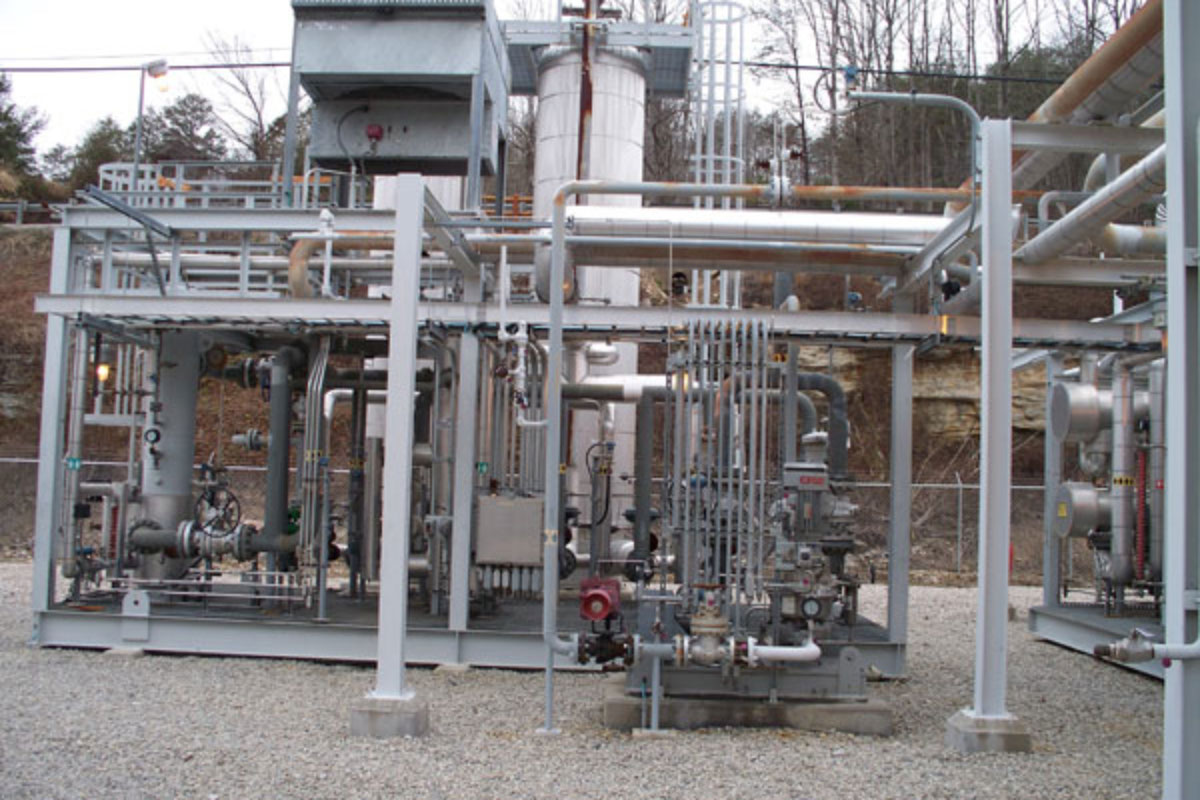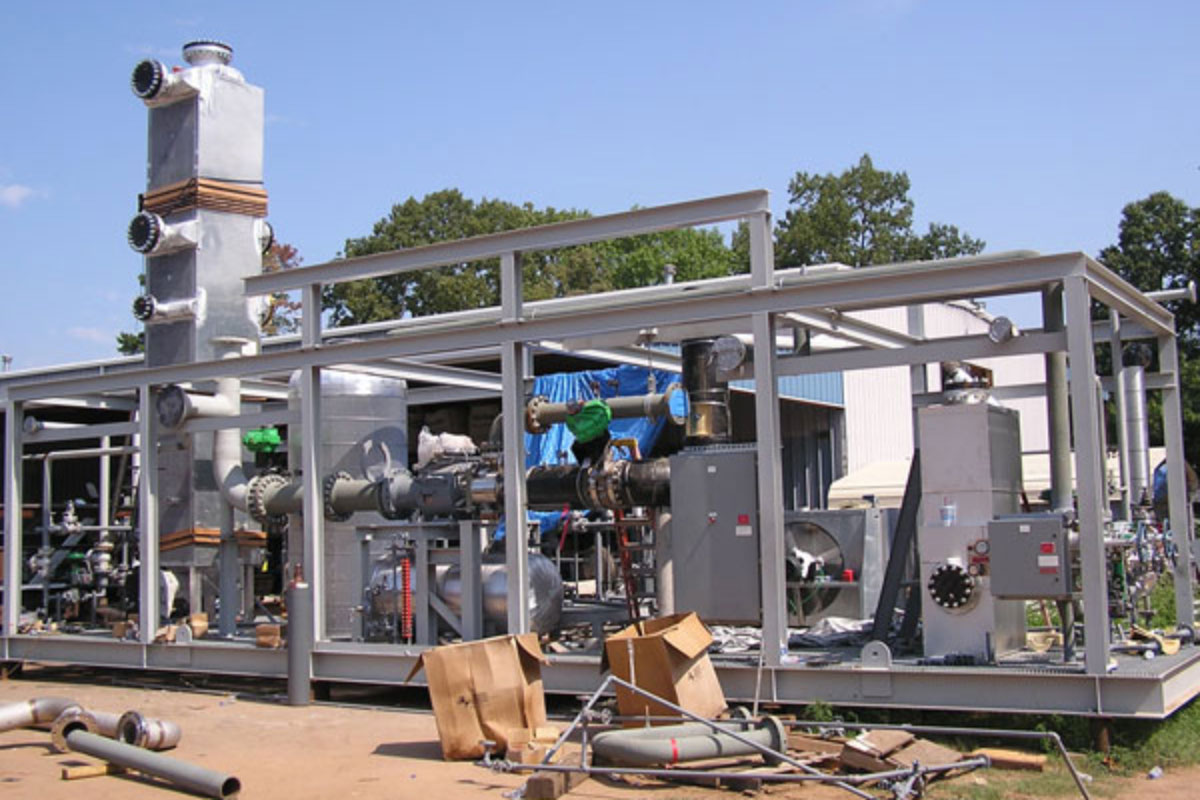Article from the Jasper Journal 3rd Quarter 2019
Written by: Jon Jasper
Jasper Ventures is involved with the Midstream segment of the oil and gas industry and focuses primarily on design, fabrication, and installation of the equipment required to process the natural gas of Midstream. This is the second in a series of articles by Jon Jasper, founder and Chairman of Jasper Ventures.
Read the first article in this series here, Midstream: The Past (Part 1).
On April 22, 1921, a group of 72 men, representing 31 companies, gathered in Tulsa to form a trade group that could address the quality and safety issues, which had almost resulted in the collapse of their young industry. The group was led by W.M. Welch of Tidal Refining Company. By 2:30 that afternoon, they had developed an organizational structure and bylaws for the “Association of Natural Gasoline Manufacturers,” ANGM.
By July 30, 1921, a tentative set of specifications for natural gasoline were adopted by ANGM. Over the years, the trade group developed increasingly improved specifications, standards, and test methods for their products through academic and industry research. In 1962, the name of the trade group was changed to Natural Gas Processors Association, NGPA, and in 1974, the name was shortened to GPA. It now goes by the name GPA Midstream.
The reason for the most recent name change in 2017 is because the industry had come to include the intrastate and interstate natural gas pipeline companies. These companies transport the processed gas for the producers and/or the third-party companies that gather and process (G&P) the gas for the producers.
Early G&P Improvements
The large gas pipeline companies comprise a major portion of the Midstream infrastructure, but the history of that segment of Midstream is not covered in this article. The third party G&P companies took over most of the G&P duties for the producers, when most of the major integrated oil companies abandoned U.S. Exploration and Production opportunities in the early 1980’s.
The first improvement of the compression and cooling process to produce natural gasoline developed very early in the West Virginia and Pennsylvania oil fields. The Saybolt process was granted a U.S. patent on April 18, 1911, but after years of litigation, the courts ruled that the patent was invalid, and the Saybolt process (absorption oil process) was open for general use. The process became the bedrock of natural gas processing and refinery gas processing for the next 50+ years.
The absorption oil process utilizes a heavy hydrocarbon liquid (similar to diesel fuel) to absorb the natural gasoline (and eventually lighter hydrocarbons) from the natural gas at high pressure in an absorber vessel. It then separates the natural gasoline and lighter hydrocarbon components from the absorption oil in a distillation process at reduced pressure. Various modifications to the absorption oil process were made over the 50+ years that it ruled in the gas processing industry.
Most of the modifications involved utilization of external mechanical refrigeration, integrated into the absorption process, in order to increase the amount of ethane and propane recovery. By the 1960’s, the production of plastics was evolving in the United States, and the ethane and propane was a good feedstock for the new petrochemical plants being built mainly by the large integrated US oil companies. Propane had also become popular as a fuel in rural America, where natural gas distribution systems were not available.
It became known as liquefied petroleum gas – LPG – or bottled gas. Thus, the early days of recovering natural gasoline from natural gas had developed into recovery of all the liquefiable components from the natural gas. The absorption oil process had become capable of recovering more than 99% of the propane and heavier components, while recovery of ethane was practically limited to recovery of about 60-70%.
Progress Continues
A new, less complex process for recovery of the liquefiable hydrocarbon components from natural gas developed in the mid-60’s and early 70’s. The new technology utilized a new machine called a turbo-expander. The first owner/operator to use the new process was Coastal States Gas Producing Company, who supplied fuel for the natural gas fired boilers in San Antonio’s Elmendorff electrical power generating plant. The engineering-construction contractor for Coastal was Fluor Engineering, and the plant started operation in January, 1964.
Coastal’s gas pipeline pressure at the gate of the power plant was 700 psia. After removal of the water, the inlet gas was pre-cooled by heat exchange with cool low-pressure residue gas, and then the gas flowed through the expansion turbine, with pressure being reduced across the turbine to about 300 psia, resulting in the gas being cooled to very low temperature.
Work was extracted from the gas stream because a compressor impeller was mounted on the other end of the shaft, on which the expander impeller (wheel) was mounted. The single stage compressor wheel provided a slight pressure boost (about 50 to 70 psi) of the low-pressure residue gas. Not only was the new expander process less complex, it also provided much higher ethane recovery than the absorption oil process, due to the very low temperature achievable with the expander.
Design ethane and propane recoveries in the first expander-based gas processing plant were 30% and 90%, respectively. Since the residue gas from the plant was being used for fuel in the Elmendorff power plant, residue gas compression was not required in this first application of the new expander process. In most applications, the processed gas must be returned to the gas pipeline pressure, which can vary from 500 to 1,000 psig. Thus, the residue gas compression is a big portion of the overall installed price of the expander process.
New Ideas, New Design, New Standard
As the expander plant design improvements increased through the rest of the 60’s into the 70’s, skid mounting of the plants became very popular as a means of decreasing field construction costs and schedule. The pioneer in this new method of construction was Bill Randall, who had tried to talk the owners of his employer, Fish Engineering, into developing his idea of modular plants. Fish had been one of the leading suppliers of natural gas processing plants in the 50’s and 60’s. When they declined to utilize his idea, Bill Randall left Fish in 1972 to start his own company, The Randall Corporation.
The first modular plants were designed to process 10 to 40 MMSCFD of natural gas, and by the late 70’s, modular expander plants were being built with capacities up to 200 MMSCFD. At the same time, the petrochemical industry in the U.S. was expanding, increasing the value of ethane.
Ethane recovery from the expander processing plants was improved to levels above 80% by the use of improved heat integration. Efficiency was also improved by the addition of mechanical refrigeration systems when required for natural gas having higher liquefiable hydrocarbon content than 3 gallons of ethane (and heavier components)/MSCF of inlet gas.
The technology of the expander process had changed very little from 1964 until 1978. In 1978, a new process was patented by Loren Buck of Tulsa Pro-Quip, which utilized some of the hydrocarbon liquid produced in the expander inlet separator, as reflux to the demethanizer.
The demethanizer is one of the key pieces of equipment in the expander process. It is used to separate (by fractionation) the ethane and heavier hydrocarbon components from the methane (the lightest and most prevalent component of natural gas). The Buck process was improved upon by the Ortloff Corporation by utilizing a portion of the expander inlet gas to produce reflux for the demethanizer. The U.S. patent for the new process was granted in 1981, and Ortloff referred to the process as the Gas Subcooled Process (GSP).
This process became the new standard for expander process plants. And by this time, the absorption oil processing plant was no longer being built in the United States gas processing industry, even though some of the legacy lean oil absorption plants continued to operate into the late 20th century. Ortloff (now owned by UOP Honeywell) as well as other companies have continued to develop new processes designed to improve the fractionation between ethane and propane by various demethanizer refluxing schemes. However, the lion’s share of U.S. gas processing plants built since 1981 have utilized the GSP design. All plants designed and fabricated since 1994 by Veritas and its predecessor, EPC, have utilized the GSP design. A process flow schematic of the GSP design in its simplest form is shown below in Figure 1.
We are pleased to share our latest edition of the Jasper Journal with you! The Jasper Journal is a quarterly publication that takes you behind the scenes and into the core of our corporate culture. The Journal also celebrates the positive impact that Jasper Ventures and its employees are having on our local communities and the lives of those around us. We are now offering a FREE digital subscription so that you automatically receive future editions directly to your inbox! (Subscription NOT required)






















